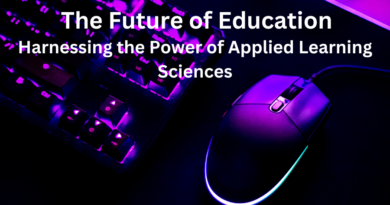Artificial intelligence powered fertility treatment by Santaan
The demand for fertility treatments in India is on the rise, driven by multiple factors, such as people starting families late, unhealthy lifestyles and many more. Fertility focused startup Santaan launched their Multi-Centre Fertility Clinic & Research Institute in Odisha back in 2015. After making a remarkable presence in Odisha’s Berhampur and Bhubaneswar, Santaan has now expanded to Bangalore and Ambur in south.

In vitro fertilization (IVF) is a fertility treatment that has helped millions of people overcome infertility and start families over the years. However, IVF is still not always successful, accessible and affordable by a large section of society. But, recent technological advances, especially granular biology and AI are helping in making fertility treatment more accessible. AI is being used to improve the accuracy of gamete selection, embryo selection, develop new drugs and treatments, and automate some of the tasks involved in IVF.
Artificial intelligence-powered gamete selection
Though we have walked a long path after the tubal blockage, we still depend on subjective assessment of fundamental inputs in IVF process , the sperm and the egg selection . We at Santaan deploy cutting edge AI to screen semen samples that gives us an output of the quantitative and the qualitative aspects of semen. Being rapid and point of care, it helps in explainability and trust in the IVF process.
Similarly egg selection has been the most sought after test in the IVF path, but mostly done in an indirect manner, meaning its mostly a vague assumption based on indirect parameters. We at Santaan use biomarkers from the oocyte directly to classify the best egg for IVF . We also use this for the ICSI procedure so that the process is data driven and not based on rule engine practice.
In summary when we fuse contextual parameters of the couple like their lifestyle, co- morbidities and hormonal milieu with the biological gamete parameters , accuracy of prediction improves for the entire cycle.
Artificial intelligence-powered embryo selection
One of the other promising applications of AI in IVF is embryo selection. Computer vision based morphokinetics application can help in selection of optimum embryos. Multiple studies in “fertility and sterility as well human reproduction update” are indicating the positive outcomes of these AI processes.
AI-powered drug development
AI is also being used to develop new drugs and treatments for infertility. AI can be used to screen large datasets of genetic and clinical data to identify potential targets for new drugs. AI can also be used to design new drugs and to optimize their dosage. This is especially important for a country like India where if we can repurpose some of our existing drugs , it can help in reducing costs of the cycles in a major way . e.g. use of sucralfate for diabetes . It has been already published in the journal Nature Medicine that AI was able to identify new targets for drugs that could improve IVF success rates.
Automated IVF tasks
AI is also being used to automate some of the tasks involved in IVF. This includes tasks such as egg retrieval, embryo transfer, and IVF lab environment control. Automated tasks can help to improve the efficiency of IVF and reduce the risk of human error. Automation at Each step in the IVF process makes the entire path more predictable and explainable. We at Santaan uses 9 innovations in the entire IVF process with an aim to reduce human error and make the entire fertility journey predictable .
The use of AI in IVF is still in its early stages, but it has the potential to revolutionize the treatment. AI can help to choose the optimum gamete and embryo, develop new drugs and treatments, and automate the tasks involved in IVF. It’s extremely important to note that AI models are dependent on the training data set . The models differ based on demography and end user practices. So if the model is not developed in India , we have to customise the model based on local dataset. To enhance faster adoption of AI we can approach this in two ways. Futuristic fertility centers can have in-house research labs dedicated for innovation. Central regulatory agencies should deploy a predicate device kind of approach for AI applications to be used in the Indian population.
“We at Santaan run a dedicated research team from the very first day of our inception. This helps us in predictable outcomes as well as scale the model across India.” Says Dr. Satish Prasad Rath ,founder and chief innovation officer of Santaan fertility centre and research institute.
Elaborating on their expansion plans, Mr. Raghab Panda , CEO of Santaan said, “We have received interest from various places, and we are evaluating those opportunities of expansion now”.
Visit Santaan website for more details.



